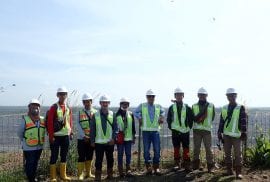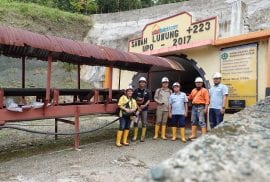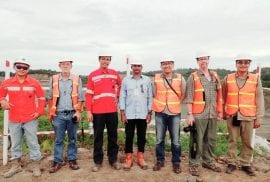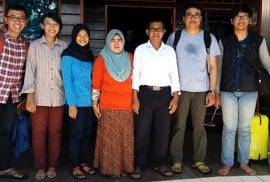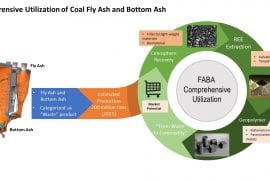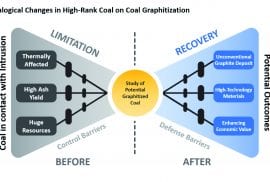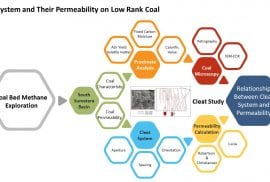In the midst of concerns about the Covid-19 pandemic. Students are required to stay active. three students from Gadjah Mada University who spent their time studying online and working on their thesis decided to take part in the competition. They are Fadli Robi A, Bunga Fitri S, Iknanda Januar Rizaldi
This geological mapping activity is one of the efforts to support the increase of coal production and the development plan of new PLTU in South Sumatra.
The UGRG team resumed its observation and sampling activities in the field. The fieldwork this time was a geological mapping conducted in the Tanjung Enim area, South Sumatra. This mapping activity is a form of cooperation between the UGRG Team and one of the coal mining
The fieldwork this time was carried out in coal mines and several PLTU locations around Tanjung Enim. This activity aims to review the potential of Rare Earth Element and Yttrium in coal and fly ash-bottom ash (FABA).
Photograph of the team conducting research in Tanjung Enim area (Photo: F. Anggara/UGM)
The field activities this time were quite different from the field activities that had been carried out before, from the number of team members who were more than usual, the field destinations
The journey starts from the search for the oldest coal mine in Indonesia, the Ombilin coal mine, to visit the basement of Sumatra Island.
This research trip visited West Sumatra. Some of the locations that are targeted for this research trip are visited to further uncover the geological potential in the West Sumatra. The three-day trip was still not enough to explore targeted locations in West Sumatra, starting
The fieldwork carried out by the UGRG Team in collaboration with several researchers from Australia aims to evaluate the origin of sediments and the depositional environment of the Tanjung Formation.
At the beginning of December 2017, Dr. Ferian Anggara and Dr. D. Hendra Amijaya conducted research in collaboration with several researchers from Australia including Dr. Tim A. Moore of Queensland University of Technology and Mike C. Friederich of Independent Consultant,
Aware of the importance of peatland benefits as well as potential catastrophes that can be caused by peat damage, Dr. Ferian Anggara and his team conducting research and conservation efforts on peatland in Muara Siran, East Kalimantan.
Figure 1. Location of peatland research and sampling in Muara Siran, East Kalimantan
After obtaining sample from drilling, the texture of the peat is immediately being described in order to determine its type. Then, the peat should be packaged immediately to avoid contact
Year of research: 2020-2023
Source of funds: Kemenristekdikti
Research on "Intelligent Material alternative sources derived from solid waste combustion PLTU: characterization and mapping its potential in Kalimantan's coal basin" is located at the Kendilo Coal
Year of research: 2019-2021
Source of funds: PT Bukit Asam, TBK.
Research on "Utilization of Fly Ash and Bottom Ash at UPTE, PT. Bukit Asam "includes the mapping and characterization of coal in the PTBA working area, characterization of existing
Year of research: 2019
Source of funds: Department of Geological Engineering UGM
Research on "The change of high-ranking coal mineralogical to the grafitisation in Laya Water mining, South Sumatera" aims to determine the potential utilization of coal in contact
Year of research: 2016
Source of funds: Department of Geological Engineering UGM
Permeability is one of the most important factors in the exploration of the CBM. Research on "Cleats system studies and its associated with low-ranking coal permeability" aims to determine



